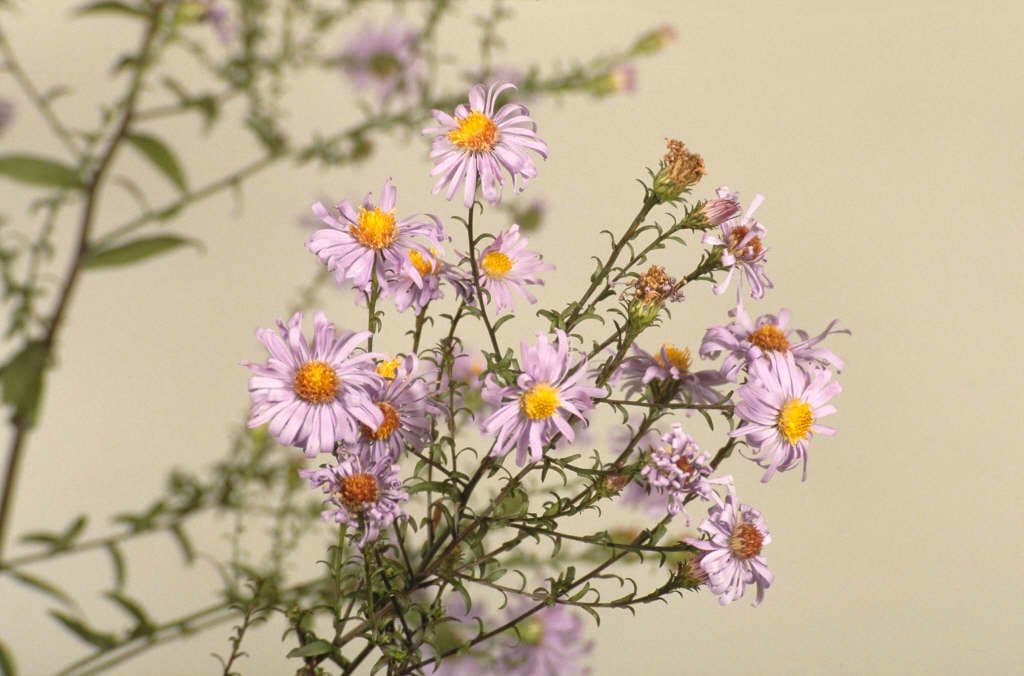Size
Ultimate height
1–1.5 metresTime to ultimate height
2–5 yearsUltimate spread
0.1–0.5 metresGrowing conditions
Moisture
Moist but well–drainedpH
Acid, Alkaline, NeutralColour & scent
| Stem | Flower | Foliage | Fruit | |
| Spring | ||||
|---|---|---|---|---|
| Summer | Purple | Green Purple | ||
| Autumn | Purple | Purple | Green Purple | |
| Winter |
Position
- Full sun
- Partial shade
Aspect
West–facing or East–facing or South–facing
Exposure
Exposed or Sheltered Hardiness
H6Botanical details
- Family
- Asteraceae
- Native to GB / Ireland
- No
- Foliage
- Deciduous
- Habit
- Bushy
- Genus
Symphyotrichum includes around 90 species of annuals, biennials and perennials, mostly spread through the Americas, that were formerly included within the genus Aster. Leaves are simple, lance-shaped and entire, but it is their daisy-like flowerheads that they are grown for; central disc florets are typically yellow, surrounded by strap-shaped ray florets in shades of pink, blue, purple or white
- Name status
Accepted
How to grow
Cultivation
Grow in well-cultivated, fertile, moist but well drained soil in sun or partial shade; may need staking - see staking perennials
Propagation
Propagate by division in early pring; divide every third year to maintain vigour
Suggested planting locations and garden types
- Coastal
- Wildlife gardens
- Cottage and informal garden
- Gravel garden
- Prairie planting
- Flower borders and beds
- Cut flowers
Pruning
Cut back in late autumn
Pests
May be susceptible to tarsonemid mite
Diseases
Asters may suffer Verticillium wilt, powdery mildews and grey moulds
Get involved
The Royal Horticultural Society is the UK’s leading gardening charity. We aim to enrich everyone’s life through plants, and make the UK a greener and more beautiful place.
